Reform Tantalus Heat Moldable Saddle
Stated Weight: 235 g
Dimensions (width x length): 142 x 245 mm
MSRP: $300 USD / $350 CAD (before $50 USD refund for heating unit return)
Blister’s Measured Weight: 252 g
Bolted To: Kavenz VHP 16 V7
Reviewer: 6’, 160 lb / 183 cm, 72.6 kg
Test Locations: Washington
Test Duration: 3 months
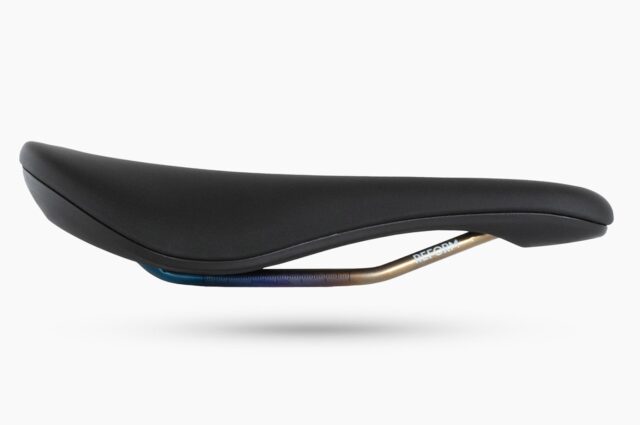
Intro
Saddles are undoubtedly one of the most personal fit elements on a bike. While some folks can get on with whatever shows up on their new bike, my nether regions seem inclined to reject most saddles on the market. I’ve found some of the most popular OEM saddles to be true ass hatchets, delivering numbness and soreness aplenty even on shorter rides.
Fortunately, there’s a lot of choice out there in saddles, and I’ve tried a lot of them. I have my list of favorites, but what if there’s a better way?
We mold our ski and snowboard boots to suit our unique foot profiles, and Vancouver, Canada-based Reform thinks that same logic can be applied to saddles. I’ve been testing their Tantalus MTB saddle for a few months now, and the results have been excellent. Read on for our full thoughts.
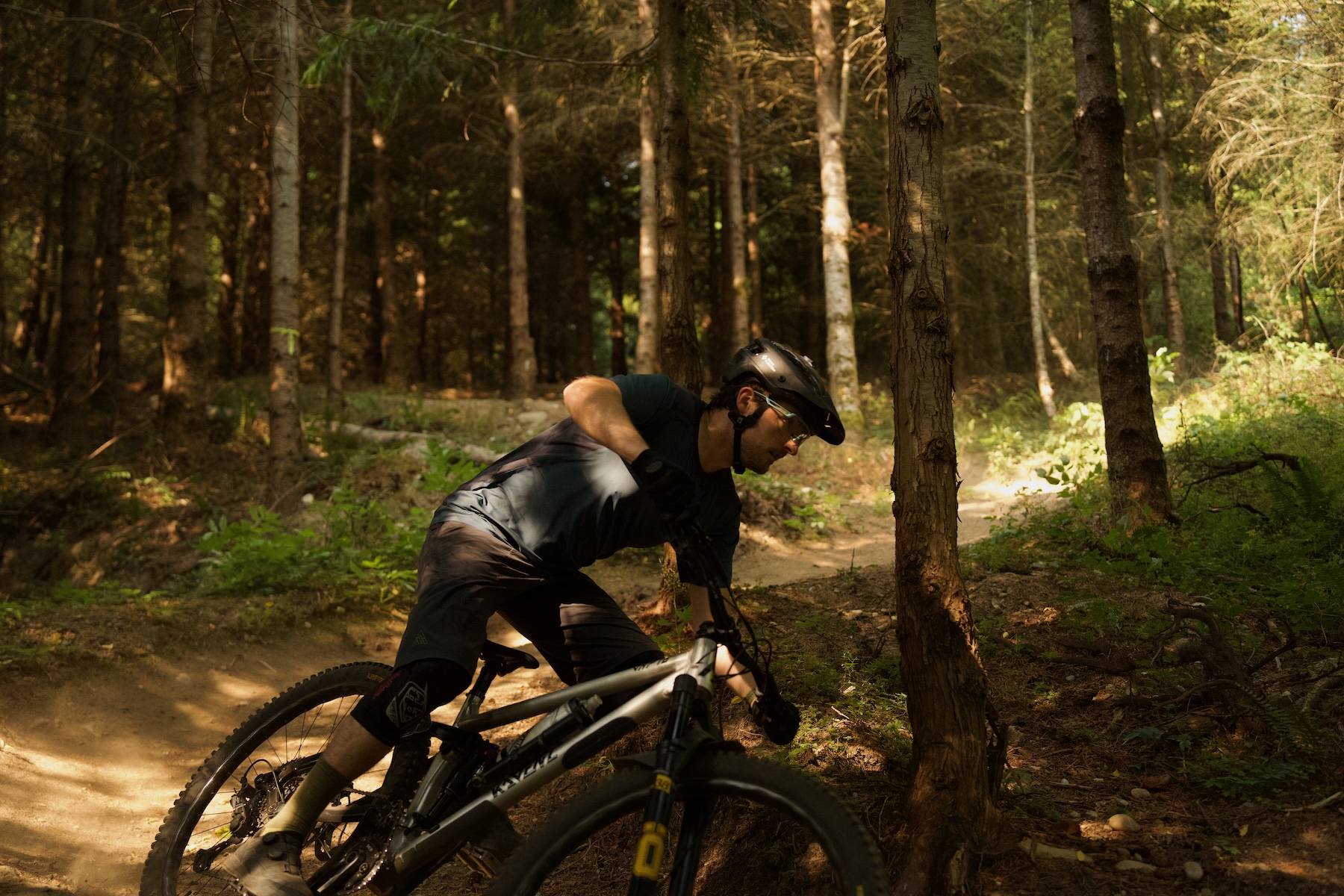
Design
Reform’s lineup consists of two saddles: the drop bar-focused Seymour and the MTB-focused Tantalus, tested here. The Seymour prioritizes a low profile and low weight, with less padding and carbon rails. Reform says that the MTB-focused Tantalus was designed with the help of EWS Champion Jesse Melamed, featuring thicker padding and tougher anodized titanium rails. The rails have a nice rainbow / oil-slick aesthetic going on, and reportedly, no two sets of rails feature an identical finish due to the anodizing process.
The Tantalus’ microfiber cover is seamlessly bonded to its nylon and carbon fiber frame. There’s a central canal to relieve perineal pressure, and it otherwise has a moderately rounded, smooth shape with a decently wide nose but overall fairly short length. The Tantalus has a slightly dropped nose that transitions to a flat middle section, while the tail of the saddle kicks up a bit, a feature that I tend to like in other saddles, as I find it gives a nice, supportive platform for steeper climbs. The Tantalus only comes in one middle-of-the-road width (142 mm), which may be a hangup for folks with particularly wide or narrow pelvises, but it’s a pretty common saddle width that should cover a good range of riders.
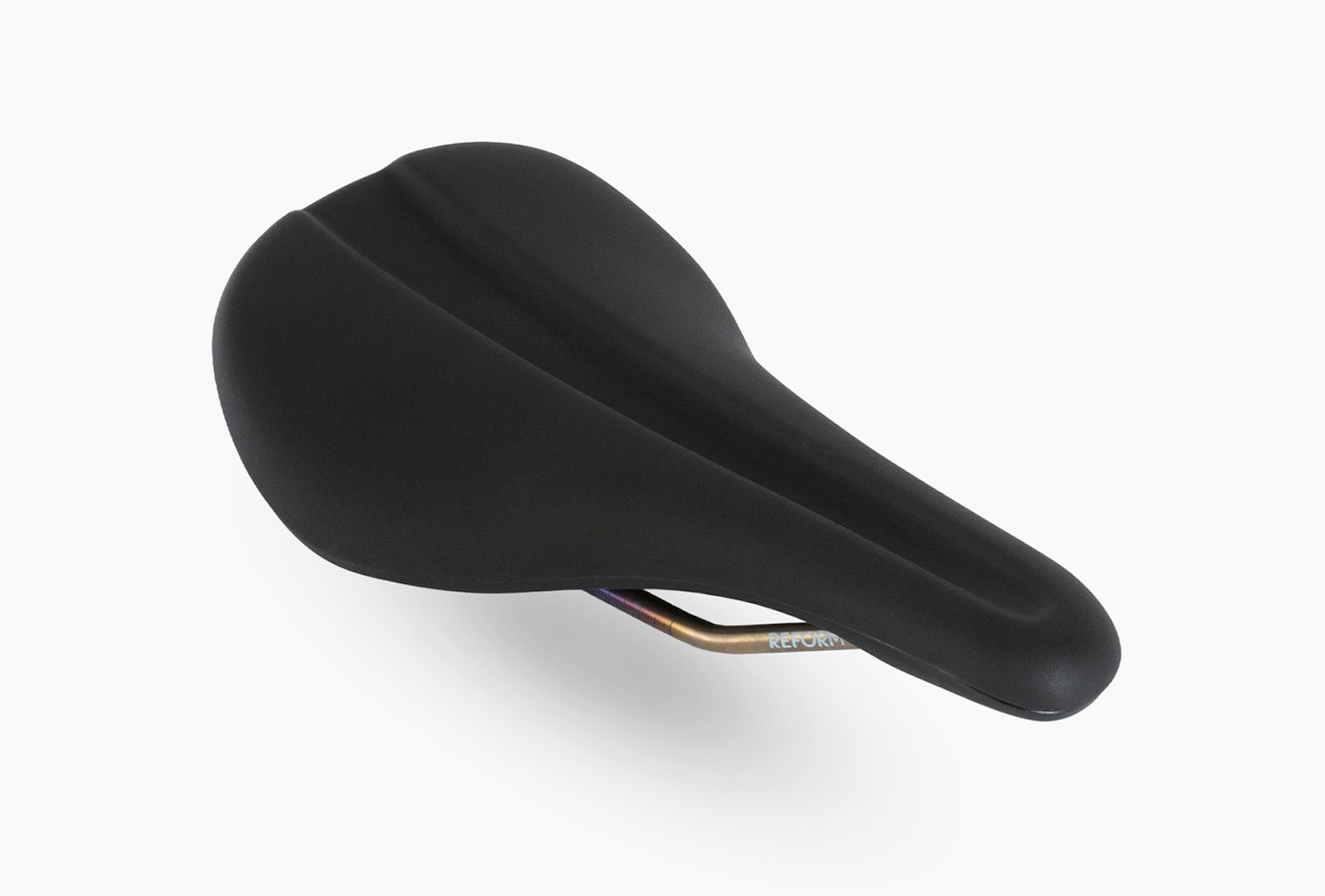
So far, nothing too out of the ordinary — but of course, we haven’t talked about Reform’s patented Thermo-Moldable Technology. There’s a heating element built into the saddle that heats the base during the molding process, allowing it to be custom molded to the rider’s unique sit bone profile. Reform doesn’t recommend their saddles for riders over 225 lbs, which might be limiting for some folks.
The Tantalus shows up in a nice custom box with no plastic packaging, along with the required AC adapter that powers the heating element. For the sake of reducing unnecessary e-waste, Reform will give you $50 back if you ship the AC adapter back to them after completing the molding process. That’s a sizable incentive for making the better environmental choice. Bravo, Reform.
Installation & Setup
The heat molding process itself is where the magic really happens, and it proved to be a surprisingly straightforward task. Reform’s instructions are clear and concise, with both written instructions on their site as well as YouTube tutorials, but I’ll step through the process quickly.
The first step is, unsurprisingly, installing the saddle on the bike. The only noteworthy thing to mention here is that you want to have the saddle angle correct before molding. There’s some preference here, but as the general contour of the Tantalus won’t change with molding, I highly recommend mounting it up, riding it down the street, and adjusting the angle to your preference.
Next is setting up the AC adapter for the heating process. The AC adapter has a toggle switch on it, which you want in the off position while attaching the magnetic plug to the saddle itself. The plug only attaches in one orientation, and it needs to be run from the rear of the saddle, over the seatpost head, to its attachment point under the saddle’s nose.
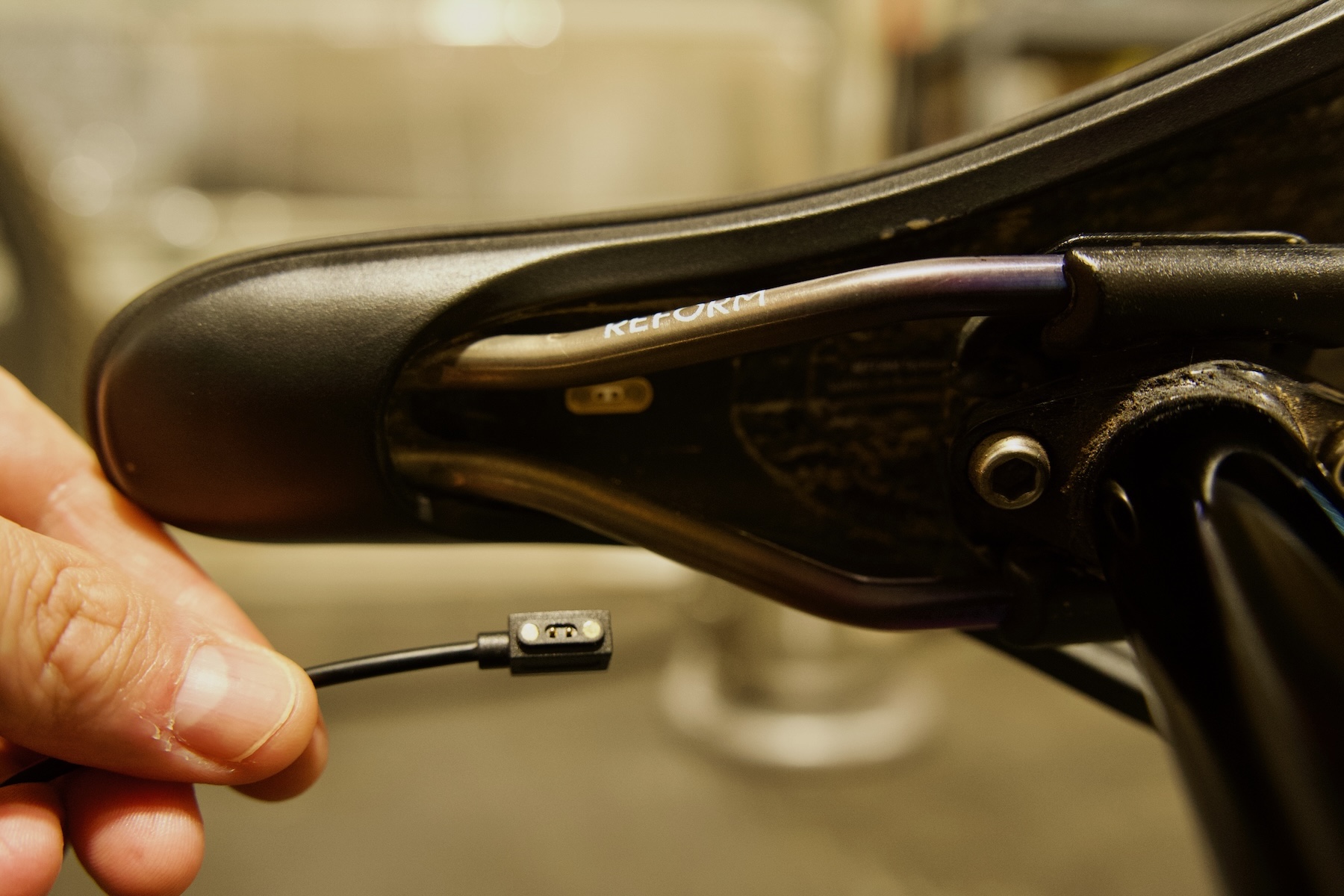
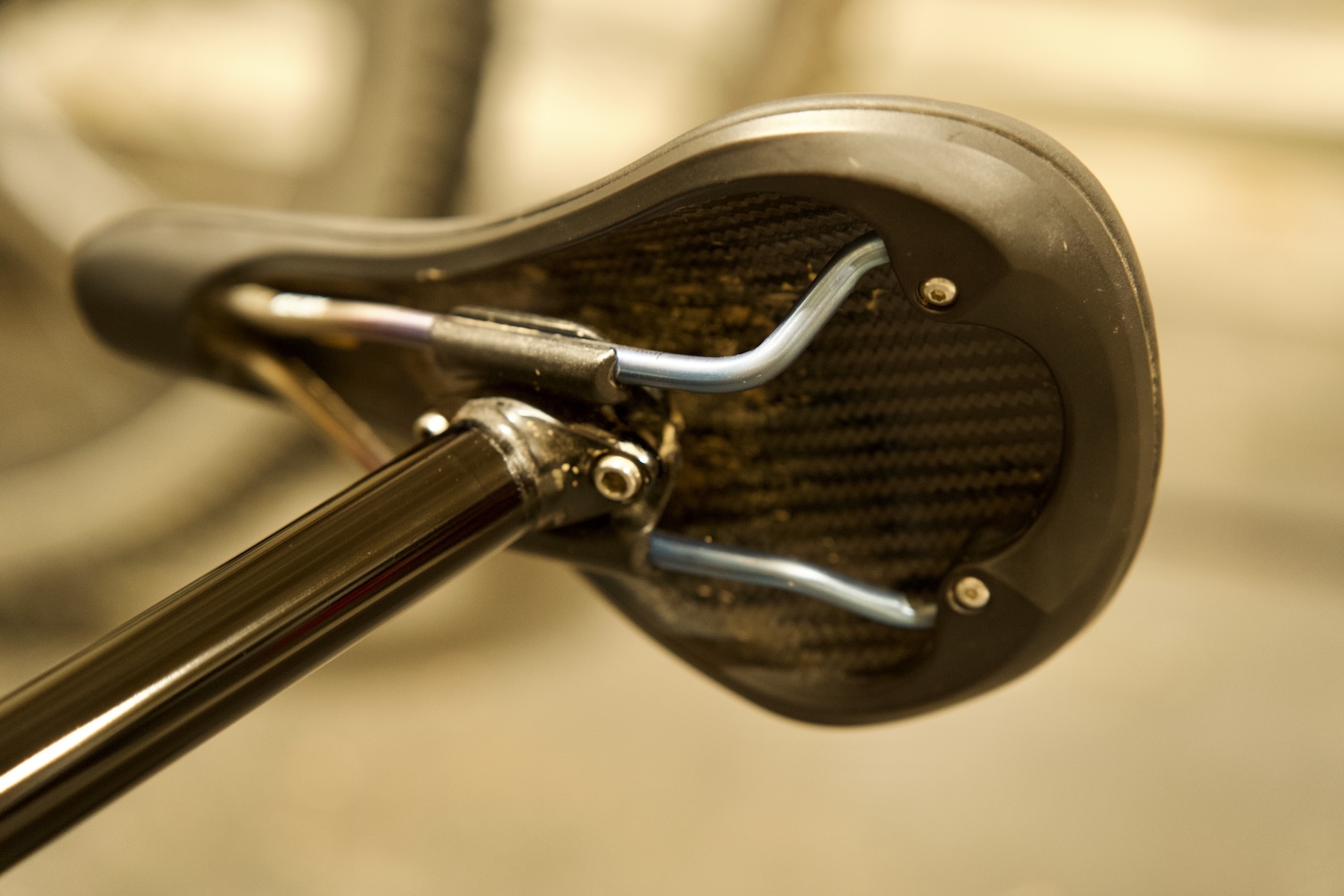
Reform has different recommended heating durations depending on your weight. Riders under 170 lbs / 77 kg are directed to heat the Tantalus for precisely six minutes, while riders over that threshold should heat for five and a half minutes. Once your timer goes off, you must immediately unplug the adapter and start riding — Reform warns that even a 30-second delay could compromise the molding process.
From there, you just go ride. Reform says you need to maintain a pedaling cadence for 10 to 15 minutes for the mold to take, but in my case, I just set off on a full ride from my house and let the saddle cool as I pedaled to the trailhead. Reform recommends shifting your position slightly as the saddle cools, and also says that using form-fitting, unpadded shorts can help get the truest imprint of your sit bones.
By following Reform’s instructions, I was able to get a perfect mold on my first attempt. While you can re-mold if things don’t feel right at first, I haven’t felt the need to adjust my initial setup. Re-molding requires plugging the saddle in for 5 minutes to reset the carbon base to its original shape, letting the saddle cool, and then starting the full process again.
On-Trail Performance
I’ve gravitated towards SQ Lab’s saddles as my favorites in recent years, but the Tantalus saddle has been a fixture on my bike since I started testing it, even replacing my beloved SQ Lab 611 Active saddle as my preferred perch on my Enduro bike.
Shape-wise, I really like the Tantalus. The relatively short overall length helps it stay out of the way while descending, while the upturned tail provides a nice platform on steeper ascents. The rounded, but not too round, shape is accommodating of both more upright and more forward riding positions. While I worried that the nose would be a touch too wide for my fairly narrow hips, I got along with it well in practice, and the sizable channel down the center of the saddle effectively prevented loss of circulation or perineal discomfort.
While the Tantalus’ padding is fairly thick, it’s also fairly stiff. The Tantalus doesn’t feel like the cushiest saddle as a result, but after a few rides, the padding broke in a bit and feels pleasantly plush while still being quite supportive. That supportiveness pays major dividends over long days in the saddle, where softer saddles can start to feel fatiguing and irritating to soft tissue.
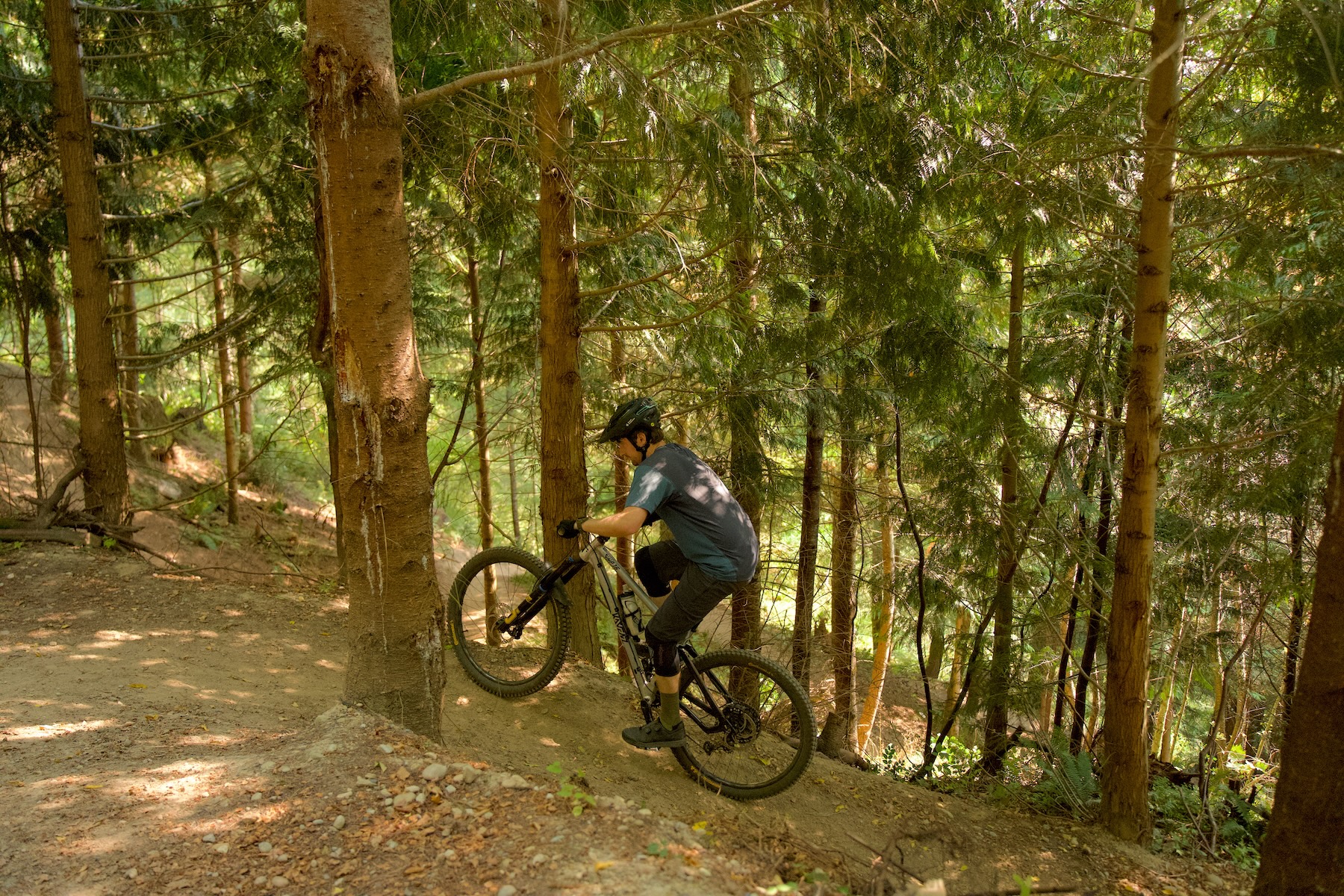
I tried the Tantalus for a ride before heat molding it, and then post-molding, so that I could really judge the process’s effect on fit. In short, it works as advertised — the molded base contoured more closely to the geometry of my sit bones and created an immediately noticeable improvement in comfort. While my first couple of rides after molding were comfortable, I really felt the padding bed in after the first week or two of use, further improving comfort and distributing pressure more evenly.
Over months of testing, the Tantalus has gone about its business without notice — a high compliment for a saddle. The short nose keeps it out of the way while descending and making more dynamic movements on the bike, the rails haven’t creaked, and the durable cover doesn’t show any discernible signs of wear.
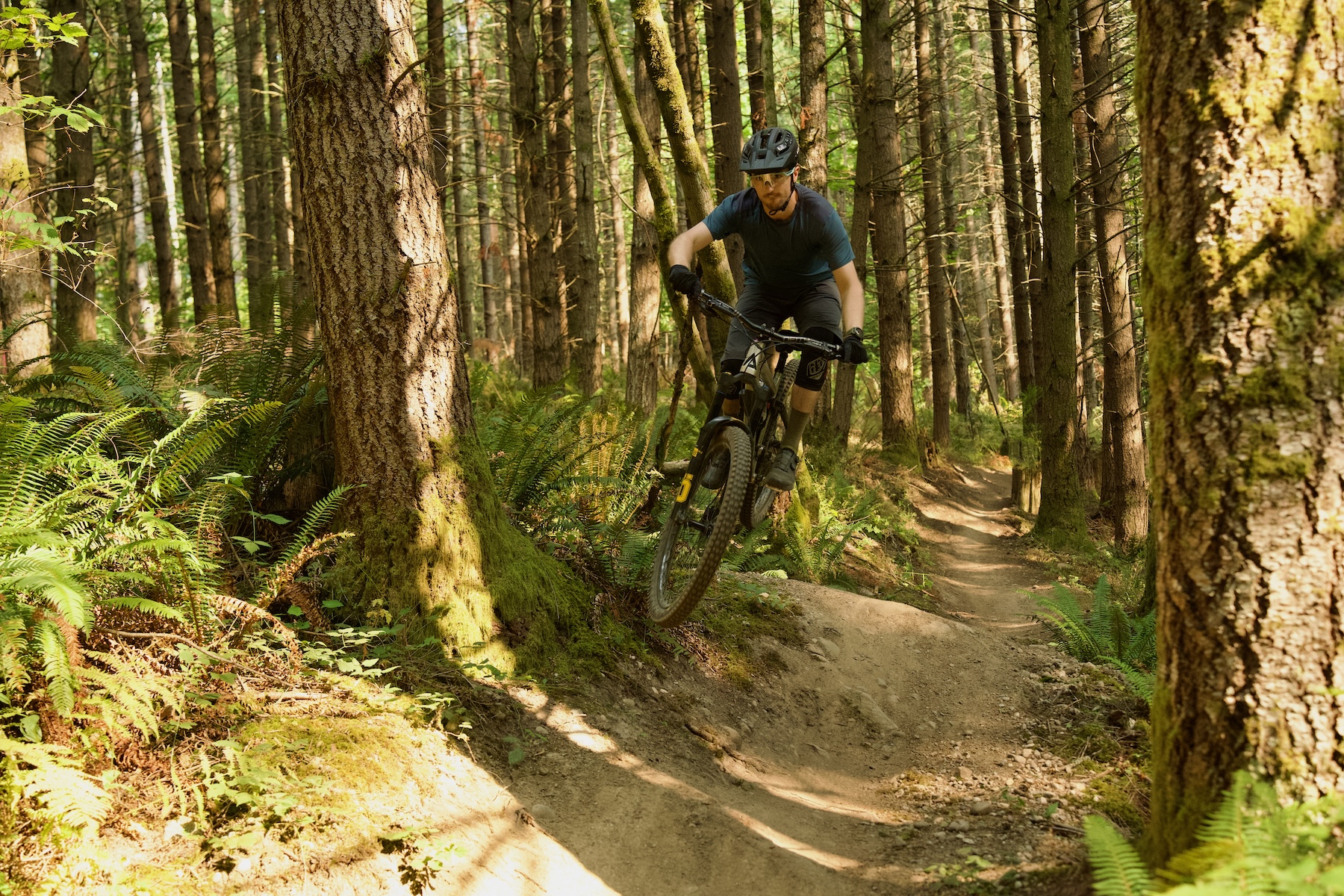
Bottom Line
Saddles are very personal, and I’ve unfortunately found my anatomy to be quite picky when it comes to saddle shape. With the Tantalus, Reform has managed to create a premium MTB saddle with a truly custom fit. The heat molding process is quick and easy, and it makes a meaningful difference in how the saddle fits. I, for one, wasn’t sure how much room there was for innovation in saddle construction, and Reform proved me wrong. While the price and single width option may limit its appeal, the Tantalus could well be a one-stop solution for folks who have struggled with finding their perfect saddle.

Great write up Zack! I’ve been on a Reform Tantalus myself for the past couple seasons. It just works, the molding really does help improve comfort, and it’s held up really well even through winter riding conditions. It’s definitely one of those products where the upfront cost is higher, but it’s a worthy investment in the long run. It’s also worth noting that Reform does offer a 90 day fit guarantee, as well as a crash replacement policy.